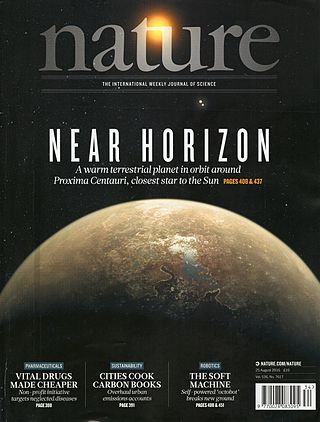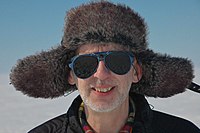
The Montreal Protocol is an international treaty designed to protect the ozone layer by phasing out the production of numerous substances that are responsible for ozone depletion. It was agreed on 16 September 1987, and entered into force on 1 January 1989. Since then, it has undergone nine revisions, in 1990 (London), 1991 (Nairobi), 1992 (Copenhagen), 1993 (Bangkok), 1995 (Vienna), 1997 (Montreal), 1998 (Australia), 1999 (Beijing) and 2016 (Kigali) As a result of the international agreement, the ozone hole in Antarctica is slowly recovering. Climate projections indicate that the ozone layer will return to 1980 levels between 2040 and 2066. Due to its widespread adoption and implementation, it has been hailed as an example of successful international co-operation. Former UN Secretary-General Kofi Annan stated that "perhaps the single most successful international agreement to date has been the Montreal Protocol". In comparison, effective burden-sharing and solution proposals mitigating regional conflicts of interest have been among the success factors for the ozone depletion challenge, where global regulation based on the Kyoto Protocol has failed to do so. In this case of the ozone depletion challenge, there was global regulation already being installed before a scientific consensus was established. Also, overall public opinion was convinced of possible imminent risks.

The ozone layer or ozone shield is a region of Earth's stratosphere that absorbs most of the Sun's ultraviolet radiation. It contains a high concentration of ozone (O3) in relation to other parts of the atmosphere, although still small in relation to other gases in the stratosphere. The ozone layer contains less than 10 parts per million of ozone, while the average ozone concentration in Earth's atmosphere as a whole is about 0.3 parts per million. The ozone layer is mainly found in the lower portion of the stratosphere, from approximately 15 to 35 kilometers (9 to 22 mi) above Earth, although its thickness varies seasonally and geographically.

Nature is a British weekly scientific journal founded and based in London, England. As a multidisciplinary publication, Nature features peer-reviewed research from a variety of academic disciplines, mainly in science and technology. It has core editorial offices across the United States, continental Europe, and Asia under the international scientific publishing company Springer Nature. Nature was one of the world's most cited scientific journals by the Science Edition of the 2019 Journal Citation Reports, making it one of the world's most-read and most prestigious academic journals. As of 2012, it claimed an online readership of about three million unique readers per month.

Ozone depletion consists of two related events observed since the late 1970s: a steady lowering of about four percent in the total amount of ozone in Earth's atmosphere, and a much larger springtime decrease in stratospheric ozone around Earth's polar regions. The latter phenomenon is referred to as the ozone hole. There are also springtime polar tropospheric ozone depletion events in addition to these stratospheric events.
The Dobson unit (DU) is a unit of measurement of the amount of a trace gas in a vertical column through the Earth's atmosphere. It originated, and continues to be primarily used in respect to, atmospheric ozone, whose total column amount, usually termed "total ozone", and sometimes "column abundance", is dominated by the high concentrations of ozone in the stratospheric ozone layer.
The year 1985 in science and technology involved many significant events, listed below.

The Antarctic ice sheet is one of the two polar ice caps of Earth. It covers about 98% of the Antarctic continent and is the largest single mass of ice on Earth, with an average thickness of over 2 kilometers. Separate to the Antarctic sea ice it covers an area of almost 14 million square kilometres and contains 26.5 million cubic kilometres of ice. A cubic kilometer of ice weighs approximately 0.92 metric gigatonnes, meaning that the ice sheet weighs about 24,380,000 gigatonnes. It holds approximately 61% of all fresh water on Earth, equivalent to about 58 meters of sea level rise if all the ice were above sea level. In East Antarctica, the ice sheet rests on a major land mass, while in West Antarctica the bed can extend to more than 2,500 m below sea level.
Joseph Charles Farman CBE was a British geophysicist who worked for the British Antarctic Survey. Together with Brian Gardiner and Jon Shanklin, he published the discovery of the ozone hole over Antarctica, having used Dobson ozone spectrophotometers. Their results were first published on 16 May 1985.
The following events occurred in May 1985:

Pine Island Glacier (PIG) is a large ice stream, and the fastest melting glacier in Antarctica, responsible for about 25% of Antarctica's ice loss. The glacier ice streams flow west-northwest along the south side of the Hudson Mountains into Pine Island Bay, Amundsen Sea, Antarctica. It was mapped by the United States Geological Survey (USGS) from surveys and United States Navy (USN) air photos, 1960–66, and named by the Advisory Committee on Antarctic Names (US-ACAN) in association with Pine Island Bay.
The British Antarctic Survey (BAS) is the United Kingdom's national polar research institute. It has a dual purpose, to conduct polar science, enabling better understanding of global issues, and to provide an active presence in the Antarctic on behalf of the UK. It is part of the Natural Environment Research Council (NERC). With over 400 staff, BAS takes an active role in Antarctic affairs, operating five research stations, one ship and five aircraft in both polar regions, as well as addressing key global and regional issues. This involves joint research projects with over 40 UK universities and more than 120 national and international collaborations.
John Adrian Pyle is a British atmospheric scientist, Director of the Centre for Atmospheric Science in Cambridge, England. He is a Professor in the Department of Chemistry at the University of Cambridge, and since 2007 has held the 1920 Chair of Physical Chemistry in the Chemistry Department. He is also a Fellow of the Royal Society and of St Catharine's College, Cambridge.

The Antarctica cooling controversy was the result of an apparent contradiction in the observed cooling behavior of Antarctica between 1966 and 2000, which became part of the public debate in the global warming controversy, particularly between advocacy groups of both sides in the public arena including politicians, as well as the popular media. In his novel State of Fear, Michael Crichton asserted that the Antarctic data contradicted global warming. The few scientists who have commented on the supposed controversy state that there is no contradiction, while the author of the paper whose work inspired Crichton's remarks has said that Crichton misused his results. There is no similar controversy within the scientific community, as the small observed changes in Antarctica are consistent with the small changes predicted by climate models, and because the overall trend since comprehensive observations began is now known to be one of warming.

Antarctica is Earth's southernmost and least-populated continent. Situated almost entirely south of the Antarctic Circle and surrounded by the Southern Ocean, it contains the geographic South Pole. Antarctica is the fifth-largest continent, being about 40% larger than Europe, and has an area of 14,200,000 km2 (5,500,000 sq mi). Most of Antarctica is covered by the Antarctic ice sheet, with an average thickness of 1.9 km (1.2 mi).

The Edward Appleton Medal and Prize is awarded by the Institute of Physics for distinguished research in environmental, earth or atmospheric physics. Originally named after Charles Chree, the British physicist and former President of the Physical Society of London, it was renamed in 2008 to commemorate Edward Victor Appleton, winner of the Nobel prize for proving the existence of the ionosphere.
Brian Gerard Gardiner is a retired British meteorologist, formerly working for the British Antarctic Survey. Together with Joe Farman and Jonathan Shanklin he discovered the "Ozone Hole". Their results were first published on 16 May 1985. They won the Chree medal and prize in 2001.
In astronomy, a calcium-rich supernova is a subclass of supernovae that, in contrast to more well-known traditional supernova classes, are fainter and produce unusually large amounts of calcium. Since their luminosity is located in a gap between that of novae and other supernovae, they are also referred to as "gap" transients. Only around 15 events have been classified as a calcium-rich supernova – a combination of their intrinsic rarity and low luminosity make new discoveries and their subsequent study difficult. This makes calcium-rich supernovae one of the most mysterious supernova subclasses currently known.

Fiona A. Harrison is the Kent and Joyce Kresa Leadership Chair of the Division of Physics, Mathematics and Astronomy at Caltech, Harold A. Rosen Professor of Physics at Caltech and the Principal Investigator for NASA's Nuclear Spectroscopic Telescope Array (NuSTAR) mission. She won the Hans A. Bethe Prize in 2020 for her work on NuSTAR.










